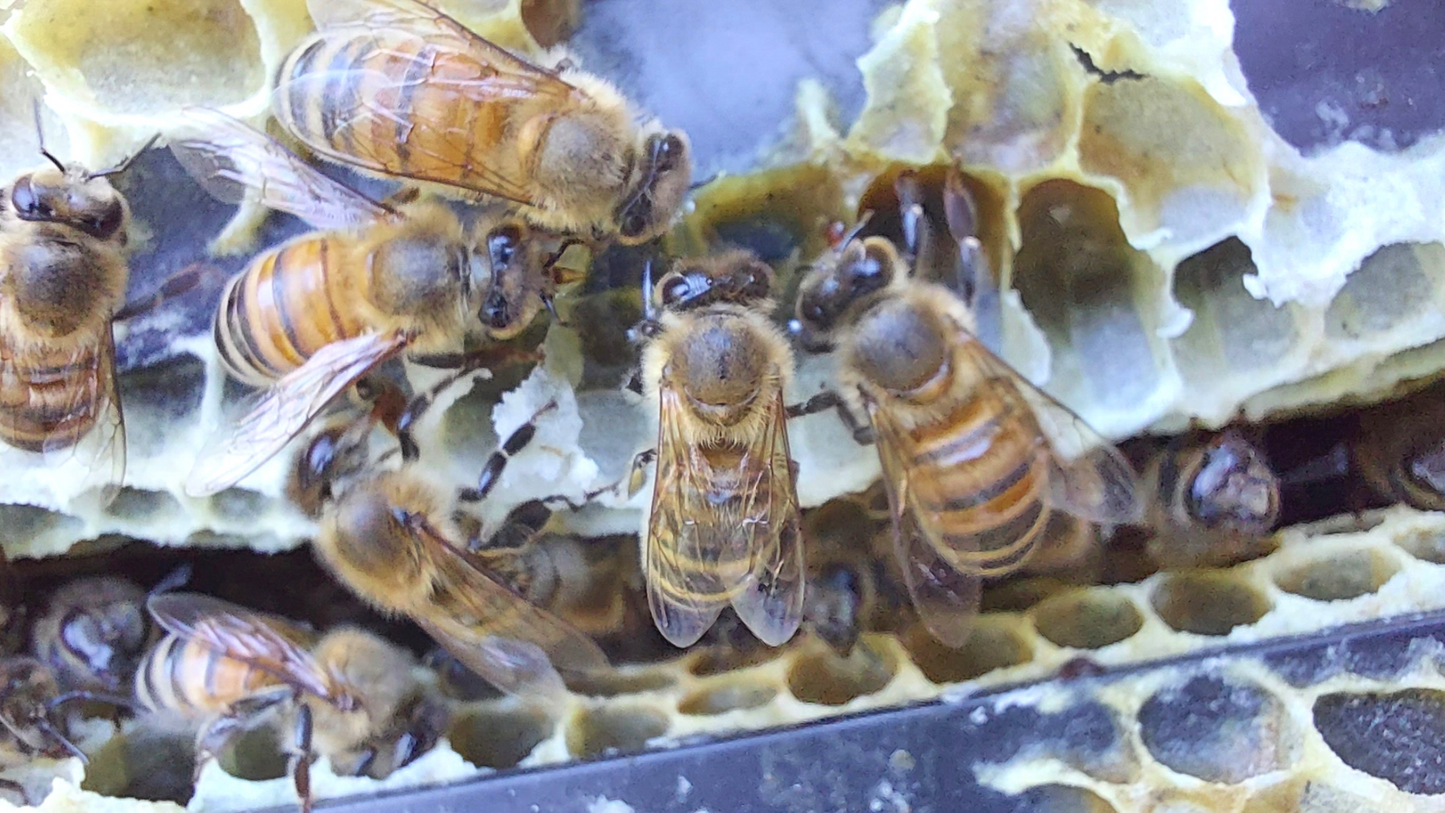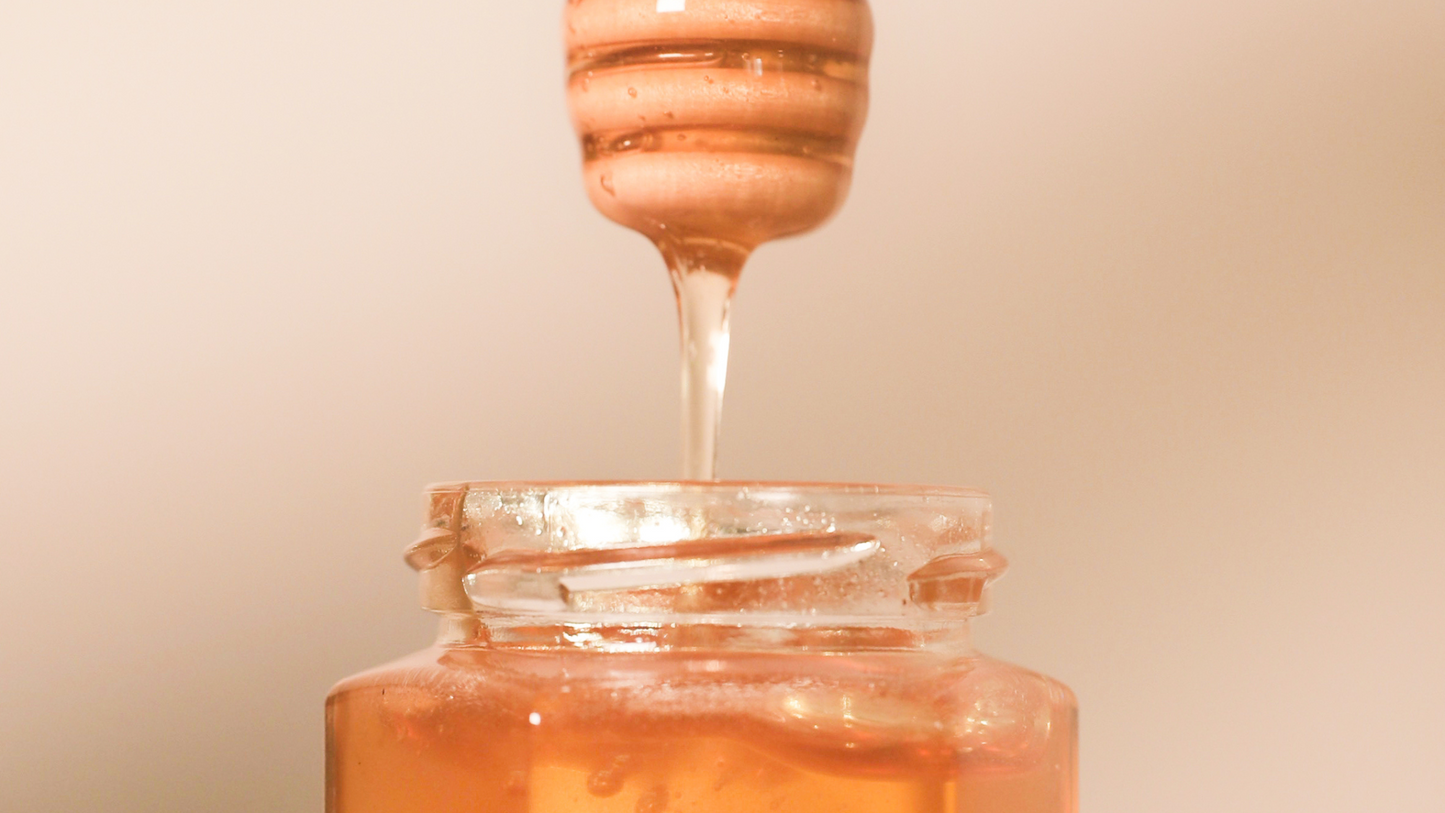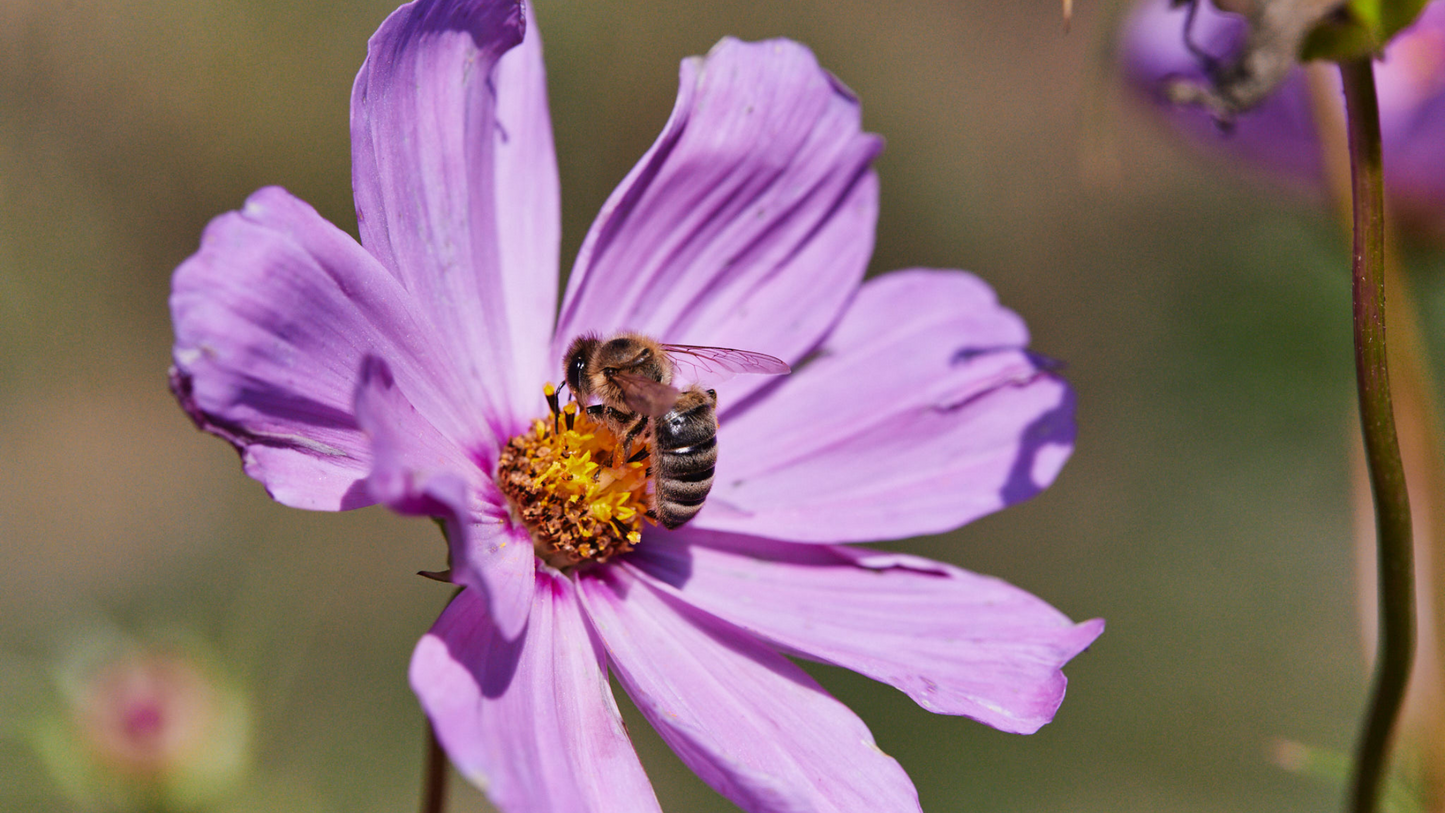
Honeybees are social creatures, living in colonies of upwards of 30,000 - 80,000 other honeybees. As a team, they work together to fulfill all of the tasks needed to keep the colony thriving and healthy, year after year.
Queen Bee
At the center of this bustling activity is the Queen Bee. She is the largest bee in the colony, with a long abdomen capable of laying around 3,000 eggs a day. As the only female bee with working reproductive organs, the Queen Bee lays tens of thousands of eggs yearly to keep up with the demand for worker bees.
The Queen also releases pheromones to communicate and coordinate with the rest of the hive, known as the “Queen Signal”, a primer pheromone that is the major driving force in social harmony and colony homeostasis. This pheromone, known as the Queen Mandibular Pheromone (QMP) tells the colony everything they need to know, including which hive is their home, how much wax to build, when the Queen needs attention, and so much more.
Drone Bees
The male honeybees are known as Drone Bees. During peak season (late spring and summer), drone bees make up around 10% of the hive. With a short lifespan of between 30 and 55 days, drone bees have only one task they hope to complete in their life. A drone bee's only role is to mate with a Queen Bee from a different colony. After a mid-air mating with a Queen Bee, the drone has served its purpose and dies immediately afterward. Unsuccessful drones are evicted from the hive in the fall or when there is a food shortage.
Drones are larger than female workers, but smaller than queen bees and they also have no stingers.
Worker Bees
Female worker bees make up the majority of the hive and are responsible for all tasks except for reproduction. Worker bees live for an average of 6 weeks and the role that a worker plays is dependent on the age of the bee.
Nurse Bees: As early as 20 minutes after emerging from its cell, this new bee gets to work in her role as a nurse bee. For the next 11 days, she will feed and take care of the developing brood as well as the queen bee.
House Bees: From 12 to 17 days old, the now adult female bee is responsible for making new wax, cleaning the hive, and removing dead bees from the hive.
Guard Bees: Guard bees are typically around 18 to 20 days old and are often found outside of the hive, guarding the colony against anything that may harm them, including thieving bees from other colonies, bears, wasps, and even humans.
Forager Bees: From 21 to 45 days old, the worker bees leave the hive and begin the tasks that honeybees are most known for - collecting pollen and nectar. Foragers leave the hive, flying up to 5km away from the hive in search of food. Worker bees use the pollen baskets on their hind legs to collect pollen from flowers, pollinating along the way. To collect nectar, worker bees use their straw-like tongue to suck the nectar into what is known as the honey stomach, which is then carried back to the hive to be turned into honey.
Scout Bees: Experienced forager bees are selected for the role of scout bee. To save the forager bees time and to optimize their trips outside the hive, the scout bees are responsible for finding abundant pollen and nectar sources and communicating the location to the forager bees.



